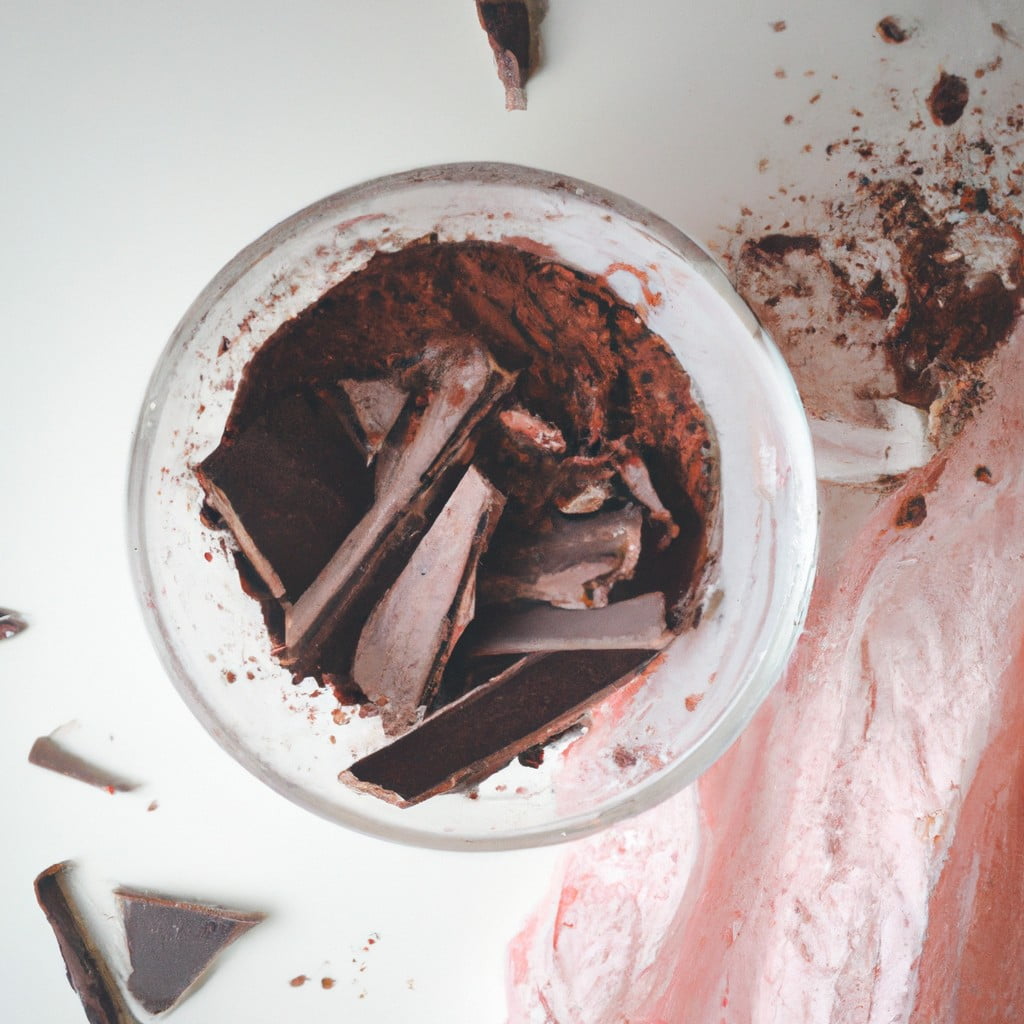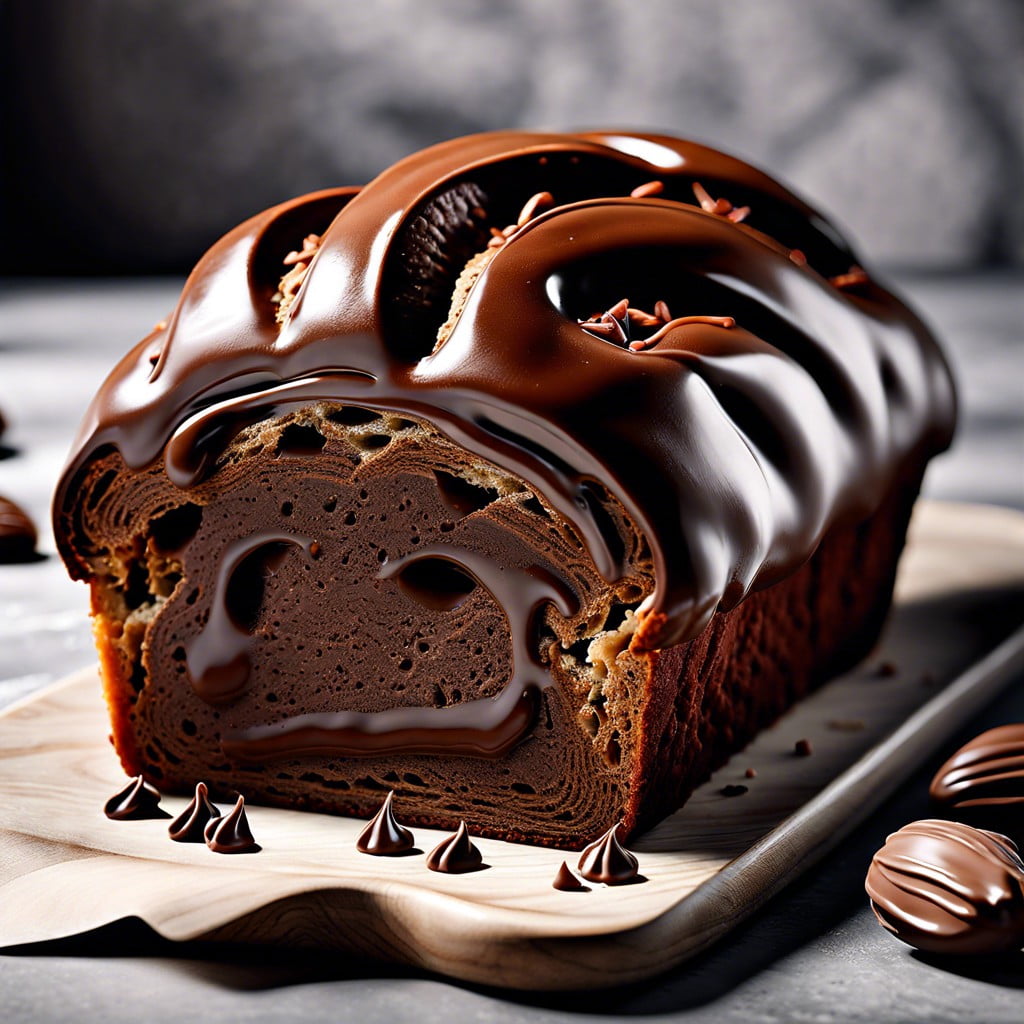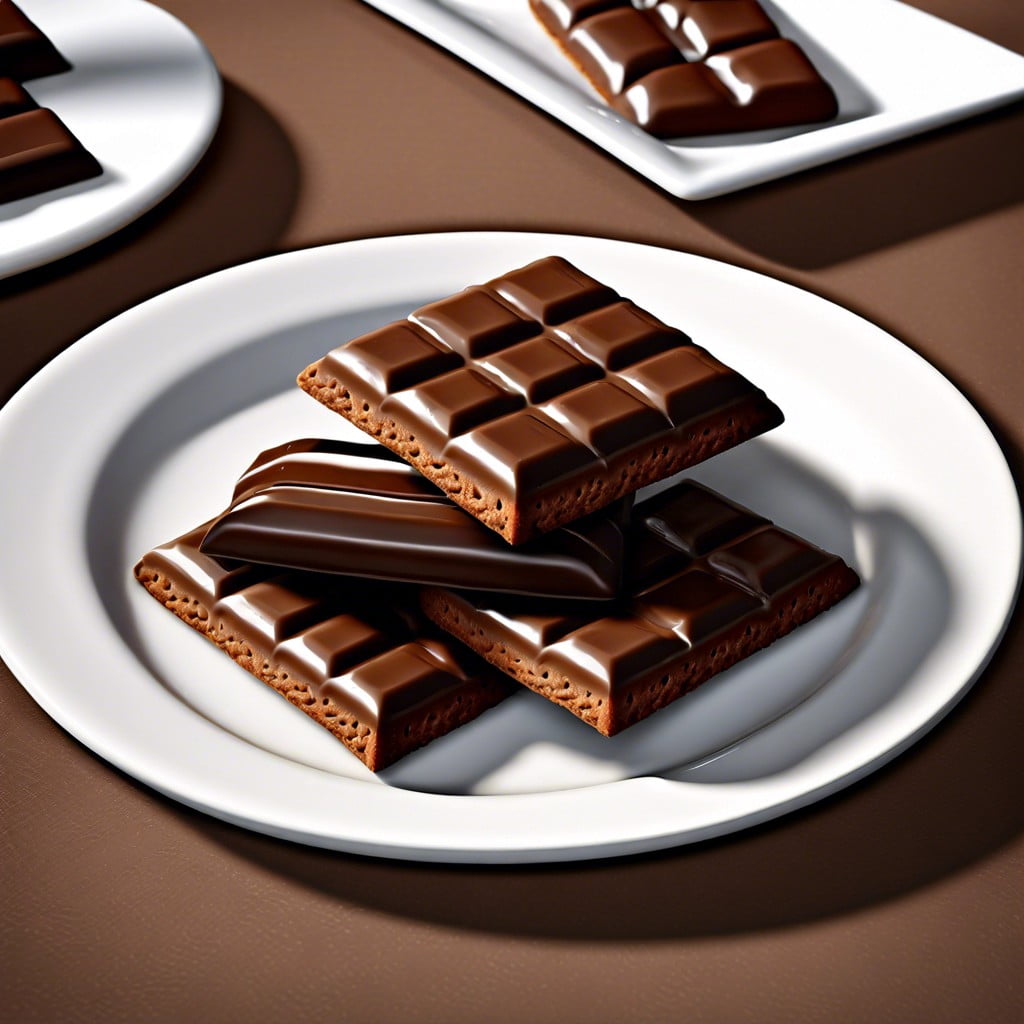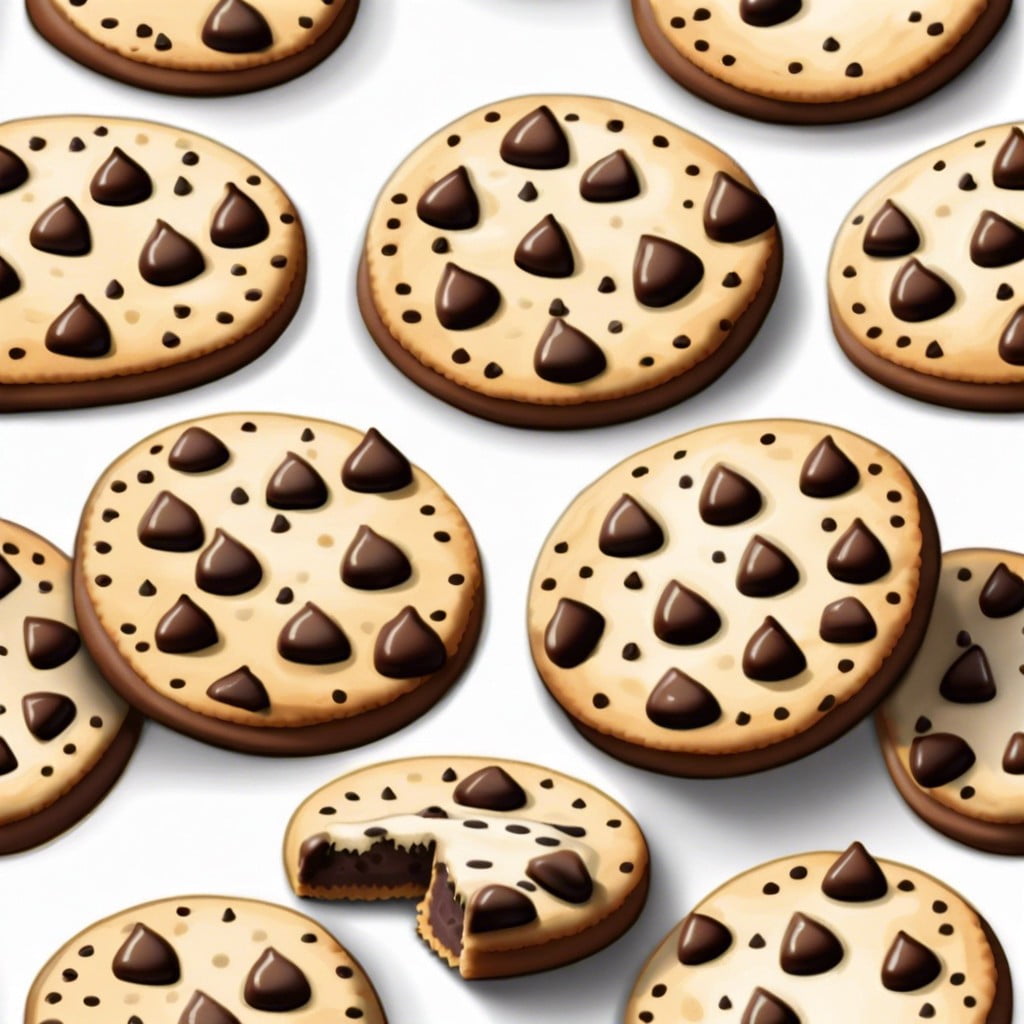Unlock the rich, decadent flavors of burgundy chocolate with a simple process that can be easily recreated in your own kitchen.
Burgundy chocolate, a delightful fusion of rich cocoa and fruity wine notes, is a treat for the senses.
This article will guide you through the steps of creating this unique dessert. From selecting the right chocolate and wine, to perfectly melding the two flavors, every detail is covered.
So, if you’re looking to elevate your chocolate-making game, you’re in the right place. Stay tuned for a comprehensive walkthrough that will have you crafting burgundy chocolate like a pro.
Key takeaways:
- Use high-quality dark chocolate, heavy cream, red wine, and natural food coloring for burgundy chocolate.
- Melt chocolate, add burgundy food coloring, wine, and sea salt.
- Use burgundy chocolate in desserts like strawberry tart and chocolate flan.
- Pair burgundy chocolate with Merlot, Brie cheese, berries, or roasted nuts.
- Store burgundy chocolate in a cool, dark place and avoid refrigeration.
Inside
Ingredients for Burgundy Chocolate

Burgundy chocolate requires four fundamental components; high-quality dark chocolate, heavy cream, red wine, and natural food coloring.
High-quality dark chocolate ensures that your dessert maintains a robust cocoa flavor, acting as the base of your burgundy chocolate.
Heavy cream serves a dual purpose in contributing to the velvety texture of the chocolate while allowing for the amalgamation of various elements.
Red wine introduces complexity and sophistication to the sweet treat. Opt for a full-bodied, flavorful red that aligns with your personal preference.
Natural food coloring helps achieve the distinctive burgundy color. It must be carefully mixed to blend evenly.
Step-by-step Process to Make Burgundy Chocolate
Begin by melting the chocolate. Place it over a double boiler, stirring occasionally until it is fully melted. If you lack a double boiler, place the chocolate in a heat-proof bowl placed over a pot of simmering water. Ensure that the base of the bowl does not touch the water.
To achieve the fantastic burgundy hue in your chocolate, add burgundy food coloring. Be cautious when doing this. Adding drop by drop is essential to control the intensity of the color. You need to stir it constantly until you reach the desired hue.
Next, to enrich the flavor profile, consider adding a hint of burgundy wine. Around a tablespoon would suffice. Be sure to integrate it well into your mixture. Remember to boil the wine for a minute or two before adding, to cook off the alcohol content.
A few pinches of sea salt can add a welcomed contrast to the sweetness too. Mix it until it’s evenly distributed throughout the semi-liquid chocolate.
Now you have well-mixed, burgundy chocolate, it’s time to shape it. Pour your chocolate mixture into your favorite chocolate molds. Gently tap the tray or mold to remove any bubbles.
To solidify, refrigerate the chocolate. This should take around an hour or two depending on the size of your molds.
The last step, unmolding, can be either joyful or nerve-wracking. Gently flex the molds to remove the chocolate, it should come out easily.
Examples of Desserts Using Burgundy Chocolate
Burgundy chocolate, with its rich and robust flavor, has the unique ability to elevate a variety of desserts. Its distinctive wine-infused taste and enchanting color add an appealing touch to traditional sweet recipes.
A popular way to use this chocolate is to complement fruity profiles. For instance, in a strawberry tart, this infusion would balance the tart’s sweetness and add complexity to the flavor.
For a sophisticated twist on a classic, try incorporating burgundy chocolate into a chocolate flan. The wine’s acidity will meticulously cut through the richness of the flan, creating a memorable dessert experience.
Adding burgundy chocolate to your brownie mix will not only add an attractive tint but also induce an exciting flavor variation.
Another show-stopping idea is to use burgundy chocolate for truffles. The striking burgundy chocolate can be used to coat the truffles, resulting in a delightful surprise as the wine-chocolate flavor unreels itself.
For a simpler and lighter dessert, dip fresh berries in melted burgundy chocolate, creating a fruity and decadent treat.
Remember, the magic of burgundy chocolate isn’t just in its color, but in its potential to revolutionize dessert flavors by creating an unexpected yet pleasing balance between sweet and tart.
Pairing Suggestions for Burgundy Chocolate
The depth of burgundy chocolate lends itself to a wide range of pairings. For beverages, consider a medium-bodied red wine such as Merlot or a burgundy wine from Pinot Noir grapes, whose rich flavors complement the burgundy chocolate perfectly. Ports or sherries also pair nicely, offering a sweet contrast.
In terms of food, burgundy chocolate is versatile. It fits well with red fruits like cherries, raspberries, and strawberries – their natural sweetness and slight acidity cutting through the richness of the chocolate. Cheese, especially the creamy and mild types like Brie cheese or a mild goat cheese, also goes well with burgundy chocolate.
For a more savory combination, consider pairing the chocolate with roasted nuts. Almonds or hazelnuts, specifically, provide a savory crunch that counterbalances the smoothness of the chocolate.
Finally, spices can add an exciting twist to your burgundy chocolate experience. Spices like cinnamon or anise can offer a new depth of flavor, while a touch of sea salt can highlight the chocolate’s inherent sweetness.
These are just suggestions, feel free to explore different combinations since the burgundy chocolate’s unique flavor profile accommodates a remarkable range of pairings. It’s all about finding the balance that pleases your palate.
Maintaining the Color and Freshness of Burgundy Chocolate
First, keep your burgundy chocolate out of direct sunlight as it can cause the color to fade and the chocolate to melt. An even room temperature is ideal for maintaining its unique shade and flavor.
For freshness, wrap the chocolate tightly in a tin foil or place it in an airtight container. This prevents the chocolate from absorbing flavors from other food and helps to extend its shelf life.
To maintain its color and sheen, avoid refrigeration. The moisture in the fridge can cause the chocolate to ‘bloom,’ creating an unsightly white layer on the surface.
The dramatic burgundy color also maintains its vibrancy when tempered correctly. Tempering involves careful heating and cooling of the chocolate to give it a shiny look and crisp texture.
Lastly, always use fresh ingredients when making burgundy chocolate. Fresh cream, for instance, can significantly extend the shelf life of your chocolate.
Storage Tips for Burgundy Chocolate
First and foremost, avoid storing your burgundy chocolate in the refrigerator. The cold temperature can interfere with the texture and flavor profile of the chocolate and also cause moisture condensation, which can further alter its consistency.
Instead, opt for a cool, dark place in your house, with a temperature of 60-70°F. This stable temperature allows the chocolate to stay fresh and maintain its burgundy color.
Invest in airtight containers to store your chocolate. Air can degrade the chocolate, making it turn whitish-gray, a process known as chocolate bloom. To maintain the color and quality of your chocolate, store it in an airtight container.
Lastly, if possible, store the chocolate in single layers, separated by a piece of wax paper. This will prevent it from sticking together and will make it easier to use when needed.
The key here is to maintain balance, ensuring not to expose your burgundy chocolate to extreme temperatures, humidity, light, and air. Which makes choosing the right storage spot and container paramount to preserving your burgundy chocolate’s quality and taste.
Suggestions for Use and Presentation of Burgundy Chocolate
Explore creative ways to express the charm of burgundy chocolate. A well-presented chocolate not only tastes good, but also delights the eyes.
Here’s how:
Arrange burgundy chocolate on a marble or slate tray to enhance its rich hue. You can create a visually appealing pattern using chocolates of different shapes and sizes.
In cocktail parties, pair the burgundy chocolate with dark red wines. The combo not only ensures a visual treat but a taste sensation too.
Create a burgundy-themed chocolate platter. Alongside burgundy chocolates, you can also include other burgundy colored snacks like dried cherries, grapes, or beets for a cohesive visual.
Mold the burgundy chocolate into different shapes to suit the occasion or the theme of the party. For example, heart-shaped chocolates would be ideal for Valentine’s Day.
The presentation can also affect the overall taste and experience. For example, serve burgundy chocolate in elegant glass bowls or pretty chocolate boxes to make them more enticing.
Remember, the aesthetics of the presentation only enhance the overall experience. The focus should be on the flavor and texture of the burgundy chocolate, which should remain perfectly indulgent and pleasing.
FAQ
Can you make chocolate a different color?
Yes, chocolate can be made a different color using food coloring powders, which mix seamlessly with chocolate and are available in cake decorating shops.
How do you make dark chocolate red?
Dark chocolate can be made red by melting it in a double boiler and then stirring in gel food coloring after removing it from the heat.
Can I add food coloring to white chocolate?
Yes, food coloring can be added to white chocolate, but one must work quickly during its integration to prevent the chocolate from seizing.
What is the process for tempering colored chocolate?
The process for tempering colored chocolate involves slowly heating the chocolate to 45°C, then cooling it down to 27°C, before finally reheating it to 32°C while stirring continuously.
How can natural ingredients be used to color chocolate?
Natural ingredients such as beet powder for red, spinach powder for green, turmeric for yellow, and blueberry powder for purple can be used to color chocolate.
Is there a specific technique to evenly distribute color in chocolate?
Yes, the technique to evenly distribute color in chocolate involves gently stirring in powdered or oil-based food coloring into melted chocolate until it achieves a consistent hue.




